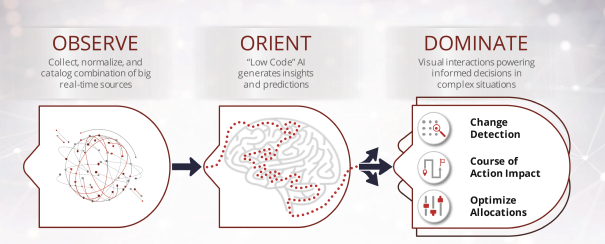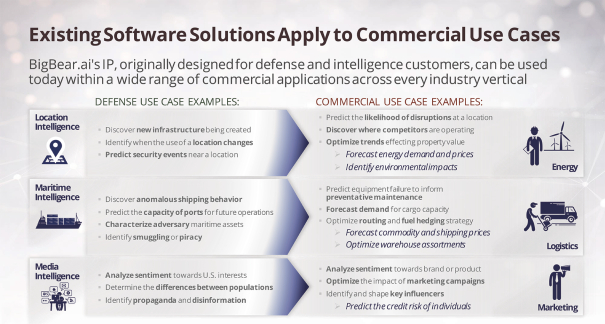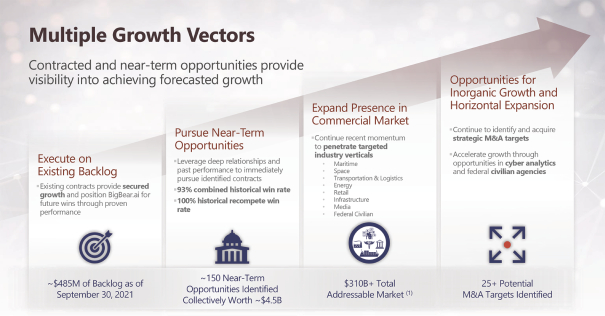The information in this prospectus is not complete and may be changed. We may not
issue these securities until the registration statement filed with the Securities and Exchange Commission is effective. This prospectus is not an offer to sell these securities and it is not soliciting an offer to buy these securities in any
jurisdiction where the offer or sale is not permitted.
SUBJECT TO COMPLETION, DATED DECEMBER 23, 2021
PRELIMINARY PROSPECTUS
BIGBEAR.AI
HOLDINGS, INC.
12,326,472 Shares of Common Stock
Up to 124,564,920 Shares of Common Stock by the Selling Stockholders
366,533 warrants by the Selling Stockholders
6.00% Convertible Senior Notes due 2026 by the Selling Noteholders
Up to 23,058,494 Shares of Common Stock Underlying 2026 Convertible Notes
This prospectus relates to (a) the issuance by us of up to 12,326,472 shares of our common stock, par value $0.0001 per share
(“Common Stock”), upon the exercise of warrants consisting of (i) 11,959,939 public warrants (as defined below) and (ii) 366,533 Private Placement Warrants (as defined below), each exercisable for one share of Common Stock
at a price of $11.50 per share (“warrants”), (b) the resale from time to time of (i) up to 124,931,453 shares of Common Stock, consisting of 124,564,920 shares of Common Stock and 12,326,472 shares of Common Stock
issuable upon the exercise of warrants and (ii) 366,533 warrants by the selling security holders named in this prospectus (each a “Selling Stockholder,” and, collectively, the “Selling Stockholders”) and
(c) the resale from time to time of up to approximately $200,000,000 in aggregate principal amount of 6.00% convertible senior notes due 2026 (the “2026 Convertible Notes”) by the selling holders named in this prospectus (the
“Selling Noteholders” and, together with the Selling Stockholders, the “Selling Securityholders”) and up to 23,058,494 shares of Common Stock issuable upon conversion of the 2026 Convertible Notes by the Selling Noteholders.
On December 7, 2021, we consummated the business combination (the “Business Combination”) contemplated by that certain
Agreement and Plan of Merger, dated as of June 4, 2021 (as amended on August 6, 2021 and November 29, 2021 and as may be further amended, supplemented or otherwise modified from time to time, the “Merger Agreement”),
by and among GigCapital4, Inc., a Delaware corporation (“GigCapital4”), GigCapital4 Merger Sub Corporation, a Delaware corporation and a wholly owned subsidiary of GigCapital4 (“Merger Sub”), BigBear.ai Holdings,
LLC, a Delaware limited liability company, and BBAI Ultimate Holdings, LLC, a Delaware limited liability company (“Ultimate”), whereby (a) Merger Sub merged with and into BigBear.ai Holdings, LLC (the “First
Merger”), with BigBear.ai Holdings, LLC as the surviving company in the First Merger and as a wholly owned subsidiary of GigCapital4, and, immediately after the First Merger, (b) BigBear.ai Holdings, LLC merged with and into
GigCapital4 (the “Second Merger,” and together with the First Merger, the “Mergers”), with GigCapital4 as the surviving entity in the Second Merger. In connection with the closing of the Business Combination, on
December 7, 2021, GigCapital4 changed its name from GigCapital4, Inc. to BigBear.ai Holdings, Inc.
We will bear all costs, expenses
and fees in connection with the registration of the Common Stock, warrants and 2026 Convertible Notes and will not receive any proceeds from the sale of such securities. The Selling Stockholders will bear all commissions and discounts, if any,
attributable to their respective sales of the Common Stock and warrants. The Selling Noteholders will bear all commissions and discounts, if any, attributable to their respective sales of the 2026 Convertible Notes and Common Stock underlying the
2026 Convertible Notes.
Our Common Stock and warrants are listed on The New York Stock Exchange (“NYSE”) under the
symbols “BBAI” and “BBAIW,” respectively. The 2026 Convertible Notes will not be listed on any securities exchange. On December 20, 2021, the closing sale prices of our Common Stock and warrants were $8.03 and $0.80,
respectively.
Investing in our Common Stock, warrants and 2026 Convertible Notes involves risks that are described in the “Risk
Factors” section beginning on page 18 of this prospectus.
Neither the Securities and Exchange Commission nor any state
securities commission has approved or disapproved of the securities to be issued under this prospectus or determined if this prospectus is truthful or complete. Any representation to the contrary is a criminal offense.
The date of this prospectus is
, 2021.



